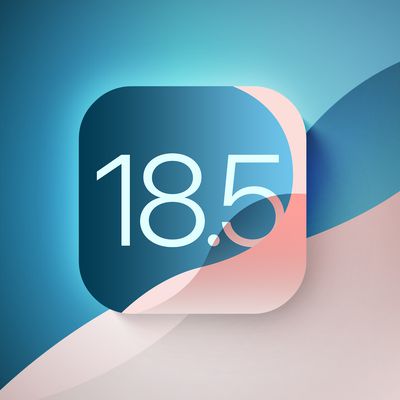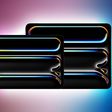In 2021, Apple unveiled the iPhone 13 as the successor to the popular iPhone 12, with improved rear cameras, longer battery life, the A15 Bionic chip, and more. As devices that are more affordable than the Pro models, but more full-featured than the low-cost iPhone SE or iPhone 11, the iPhone 13 will likely be the most popular option among consumers.
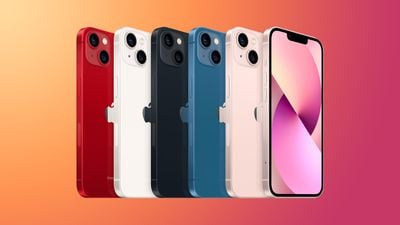
The iPhone 12 from 2020 continues to be sold by Apple. As it is a year older than the iPhone 13, it starts at $599, while the iPhone 13 starts at $699. As the iPhone 12 and iPhone 13 share a large number of features, should you consider purchasing the older model to save money? Our guide helps to answer the question of how to decide which of these two iPhones is best for you, but overall the iPhone 13 is only a minor upgrade over the iPhone 12.
Comparing the iPhone 12 and the iPhone 13
The iPhone 12 and iPhone 13 share a large number of key features, such as display size, 5G connectivity, and camera specifications. Apple lists these same features of the iPhone 12 and iPhone 13:
Similarities
- 6.1-inch OLED Super Retina XDR display with HDR, True Tone, P3 wide color, and Haptic Touch
- Face ID
- 6GHz 5G connectivity (and mmWave in the U.S.)
- Six-core A-Series Bionic chip
- 4GB of memory
- Dual 12MP ƒ/2.4 Ultra Wide and ƒ/1.6 Wide cameras with two-times optical zoom out
- Photography features including Night mode, Deep Fusion, True Tone flash with Slow Sync, Portrait mode, and more
- Videography features including 4K video recording at up to 60fps, HDR video recording with Dolby Vision, Audio zoom, slo-mo video up to 240fps at 1080p, Night mode Time-lapse, and more
- Ceramic Shield front
- IP68 rated splash, water, and dust resistance
- Aerospace-grade aluminum
- MagSafe and Qi wireless charging
- Lightning connector
- Available with 128GB and 256GB storage options
- Available in (PRODUCT)RED
Apple's breakdown shows that the iPhones share a number of notable key features. Even so, there are meaningful differences between the iPhone 12 and iPhone 13, such as their processors and battery life.
Differences
iPhone 12
- Super Retina XDR display with 625 nits max brightness (typical)
- A14 Bionic chip
- Dual SIM (nano-SIM and eSIM)
- Smart HDR 3 for photos
- Dolby Vision HDR video recording up to 4K at 30fps
- Up to 17 hours battery during video playback
- Weighs 164 grams
- Available in Purple, Blue, PRODUCT(RED), White, and Black
- Available with 64GB, 128GB, and 256GB storage options
iPhone 13
- Super Retina XDR display with 800 nits max brightness (typical)
- 20 percent smaller notch
- A15 Bionic chip
- Dual SIM (nano-SIM and eSIM) and dual eSIM support
- Smart HDR 4 for photos
- Photographic Styles
- Dolby Vision HDR video recording up to 4K at 60fps
- Cinematic mode video recording with shallow depth of field (1080p at 30 fps)
- Up to 19 hours battery during video playback
- Weighs 174 grams
- Available in Starlight, Midnight, Blue, Pink, Green, and PRODUCT(RED)
- Available with 128GB, 256GB, and 512GB storage options
Read on for a closer look at each of these aspects, and see what exactly both iPhones have to offer.
Design and Colors
Both the iPhone 12 and the iPhone 13 have the same industrial design with squared-off edges and a flat aluminum band around the sides. The devices use aerospace-grade aluminum on the edges and a single piece of polished glass on the rear. The iPhone 13's dual rear cameras are offset against each other diagonally, as opposed to the iPhone 12's vertical orientation.
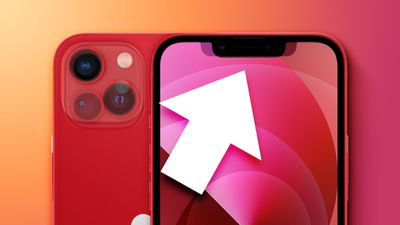
The iPhone 13 features a 20 percent smaller notch for the TrueDepth camera array, which frees up more display area and makes the cutout less obtrusive. Other than the rear camera positioning and the smaller notch, the devices look otherwise the same.
The iPhone 12 is available in Purple, Blue, Green, White, and Black, while the iPhone 13 is available in Starlight, Midnight, Blue, Pink, and Green. Both are also available in PRODUCT(RED). The two shades of Blue are similar, as are White and Starlight, and Black and Midnight. As similar-looking devices, preference for either the iPhone 12 or the iPhone 13 in terms of design and colors will come down to personal taste.
Display
The iPhone 12 and the iPhone 13 both have a 6.1-inch OLED Super Retina XDR display with HDR, True Tone, P3 wide color, and Haptic Touch. The only difference with the iPhone 13's display is that it is able to get 175 nits brighter during typical non-HDR use, but this is not a major reason to get the newer model.
A14 vs. A15
The iPhone 13's A15 Bionic chip brings a modest performance improvement over the A14 Bionic in the iPhone 12. Benchmarks show that the A15 in the iPhone 13 offers around 10 percent better single-core performance and 18 percent better multi-core performance compared to the iPhone 12's A14 chip. In graphics tasks, the iPhone 13 performs roughly 15 percent better than the A14 Bionic in the iPhone 12.
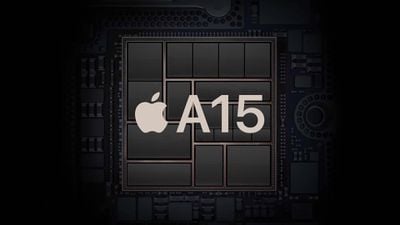
These performance improvements with the A15 are iterative rather than a substantial reason to upgrade alone. The A14 is still an extremely capable chip, and in day-to-day use, the two devices are likely to perform similarly.
Dual SIM
Both devices support dual SIM, with one physical nano-SIM and an eSIM, but the iPhone 13 is also able to support two eSIMs simultaneously. If you need to switch between two eSIMs, you will need to get the iPhone 13 to get this functionality.
Cameras
The iPhone 12 and iPhone 13 have dual 12MP rear cameras with a ƒ/2.4 Ultra Wide and a ƒ/1.6 Wide camera. The iPhone 13's Wide camera features a larger sensor in the iPhone 13, capable of capturing 47 percent more light for less noise and brighter images, and the Ultra Wide features a new sensor to capture more detail. The Wide camera also contains sensor-shift optical image stabilization technology for smoother video and improved image quality.
Although the devices can both record Dolby Vision HDR video, the iPhone 13 is able to record this up to 60 fps, as opposed to the iPhone 12's 30 fps.
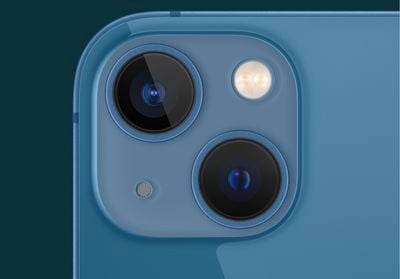
The iPhone 13 features a brand new camera feature called Cinematic mode, which allows users to record video with a shallow depth of field at 1080p and 30fps. Cinematic mode can rack focus to seamlessly shift the focus from one subject to another when capturing video. It holds focus on the subject while blurring the background, and can automatically change the focus when a new subject is about to enter the scene. Blur and focus can be adjusted after capturing video as well through the Photos app.
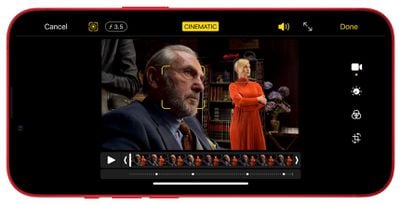
The iPhone 13 also supports Photographic Styles, which are smart, adjustable filters that can do things like boost or mute colors without affecting skin tone. Styles apply selectively to an image, unlike a filter that is applied to the entire image. Photographic Styles include Vibrant (boosts colors), Rich Contrast (darker shadows and deeper colors), Warm (accentuates golden undertones), or Cool (accentuates blue undertones). Tone and Warmth are customizable for each style, so you can get the exact look that you want.
While the iPhone 12 and iPhone 13 feature cameras with similar specifications, the iPhone 13 offers Dolby Vision HDR video at a higher frame rate, Cinematic mode, and Photographic Styles, as well as hardware improvements such as a larger sensor and sensor-shift stabilization. The iPhone 12's camera is still highly capable, but with more photography and videography options and improved image quality, the iPhone 13 is the better option.
Battery Life
One area of significant difference between the iPhone 12 and the iPhone 13 is battery life. The iPhone 13 features up to 19 hours of battery life during video playback, which is two hours more than the iPhone 12's 17 hours. When streaming video, the iPhone 13 can deliver 15 hours of battery life instead of the iPhone 12's 11 hours. The iPhone 13 can also stream audio for 10 hours longer than the iPhone 12. The iPhone 13 is therefore clearly the better device for users who need the maximum possible battery life from their iPhone compared to the iPhone 12.
Storage
The iPhone 12 is available with 64GB, 128GB, and 256GB storage options, while the iPhone 13 is available with 128GB, 256GB, and 512GB storage options. This means that if you need more than 256GB of storage, you will need to get the iPhone 13 to have the option of a larger 512GB storage capacity. Otherwise, there is no difference between the devices in terms of storage options.
Other iPhone Options
It is worth noting that the iPhone 13 mini provides the same feature set as the iPhone 13 for $699, simply with a more compact design, a 5.4-inch display, and a slightly shorter 17 hours of battery life (during video playback). Likewise, the iPhone 12 mini provides the same feature set as the iPhone 12 for $599, but with a more compact design, 5.4-inch display, and 15 hours of battery life (during video playback).
For a ProMotion display with a refresh rate up to 120Hz, additional RAM and a more graphically capable processor, more premium design, even longer battery life, and a more capable rear camera setup, there is the iPhone 13 Pro, which starts at $999. The iPhone 13 Pro offers the most full-featured and capable iPhone experience, but is $200 more expensive than the standard iPhone 13.
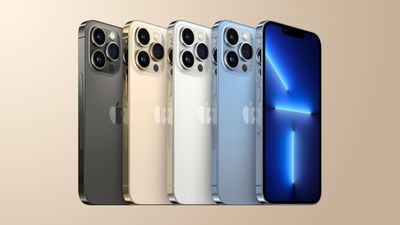
Final Thoughts
The iPhone 13's upgrades over the iPhone 12 are mostly iterative, offering refinements in terms of a brighter display, a smaller notch, performance improvements, and new camera software features. The more significant upgrades include the camera hardware and longer battery life, but at face value there is likely not enough to justify getting the new model over the iPhone 12 for most customers.
However, when looking at the 128GB and 256GB storage options only, since these options are available with both models, the iPhone 13 costs $699 and $799, and the iPhone 12 costs $649 and $749, respectively. This means that like for like, there is only a $50 price difference between the iPhone 12 and the iPhone 13, providing you need more than 64GB of storage. While the iPhone 13's upgrades are mostly iterative and not major reasons to upgrade, they are easily worth the additional $50, so if you need more than 64GB of storage you should buy the iPhone 13.
If 64GB of storage is sufficient for you, it will be a case of weighing up if the iPhone 13's selection of improvements and extra storage are worth the additional $100. The iPhone 12's A14 Bionic chip, 17-hour battery life, and dual-camera setup are still highly capable for everyday use, and the device shares an overwhelming majority of the iPhone 13's most versatile features, such as 5G connectivity, Night mode, MagSafe, and IP68 water resistance, which may make the additional $100 for the iPhone 13 difficult to justify.








